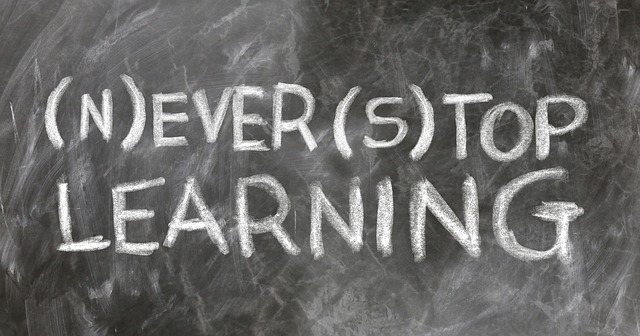Understanding the Importance of Effective Meetings
When we think about team management, the concept of effective meetings often comes to the forefront. Meetings serve as fundamental touchpoints for collaboration, communication, and decision-making. However, it’s crucial to understand that not all meetings are effective. A poorly organized meeting can lead to wasted time, unproductive discussions, and employee frustration. To maximize productivity and ensure everyone remains engaged, adopting strategies that promote effective meetings is necessary. Effective meetings stimulate collaboration, creativity, and provide clear direction. They keep teams aligned on goals and priorities, facilitating transparency and accountability.
One of the most striking facts about meetings is that, according to studies, employees spend roughly 23 hours a week in meetings. That’s almost three days a week! With this massive time investment, it’s imperative that leaders strategize how to conduct meetings that yield positive results rather than becoming burdensome time sinks. Understanding the goals of meetings helps leaders design better agendas, choose appropriate formats, and identify participants. Moreover, effective meetings should be rooted in respect for everyone’s time, hence adopting a structured approach is beneficial. Coding the meeting framework lays the groundwork for orchestrating engaging discussions that result in actionable outcomes.
Preparing for a Successful Meeting
Preparation stands out as a cornerstone of effective meetings. It’s much like preparing for a grand feast—getting everything in order before the event ensures a smoother experience. The first step is to define the meeting’s objectives. What do you hope to achieve? Clear objectives clarify the purpose of the meeting and guide the discussion. They help participants align their expectations and contributions. Next, drafting a well-thought-out agenda provides a roadmap for the meeting, highlighting discussion topics while also allocating specific time slots to each item. Ensuring that every team member has access to the agenda well before the meeting offers people the chance to prepare adequately.
Another key aspect of preparation involves selecting the right participants. Consider who needs to be at the table in order to effectively address the agenda items. It’s tempting to invite everyone for transparency, but this often leads to more confusion than clarity. Instead, focus on including individuals whose expertise directly relates to the discussion themes. This approach not only makes sure that conversations stay relevant but also streamlines the flow of information. Additionally, consider the tools and technology required for the meeting. For virtual gatherings, using reliable platforms enhances participant engagement and fosters seamless communication. Ensuring technology is set up and tested before the meeting can also prevent unnecessary hiccups.
Effective Meeting Facilitation Techniques
Once you establish a foundation through preparation, facilitation becomes the next vital component to conduct effective meetings. As the meeting leader, your role transitions into managing discussions while keeping everyone engaged. Start the meeting by clearly stating the objectives, reiterating the agenda, and setting ground rules for discussion. Ground rules may include guidelines for how long each participant has to speak or how to address interruptions. This clarity creates a sense of structure and encourages participation in an inclusive manner.
Moreover, effective facilitation demands high levels of emotional intelligence. Being attuned to team dynamics allows you to navigate conversations adeptly. Pay attention to verbal and non-verbal cues. If someone seems hesitant to share, consider drawing them into the discussion. Questions can be particularly effective in promoting engagement. Asking for input from quieter participants can spark different ideas and perspectives, creating a richer dialogue. Use open-ended questions to encourage elaboration and critical thinking. Acknowledge contributions and facilitate respectful debates when disagreements arise, demonstrating that diverse views are valued.
Encouraging Participation and Engagement
Participation is the heartbeat of effective meetings. To transform a meeting from a simple presentation to an interactive space, creating an atmosphere that encourages participation is essential. Techniques such as round-robin sharing can ensure everyone has the opportunity to contribute. This particular approach allows team members to take turns sharing insights, which fosters inclusivity and comprehensive discussions. Encourage open dialogue by welcoming all opinions and discouraging negative criticism. Create a climate of trust where team members feel safe expressing their thoughts without the fear of retaliation or dismissal.
Furthermore, engaging team members can be achieved through interactive tools. Utilizing collaborative platforms during meetings allows participants to share their ideas visually, aligning thoughts cohesively. Tools like whiteboard applications can enable brainstorming sessions that facilitate creativity. In addition, employing techniques like breakout sessions for larger groups can yield focused discussions in smaller teams, allowing for productivity without overwhelming participants. The key to increasing engagement lies in making everyone feel connected and accountable to the meeting’s outcomes.
Documenting Meeting Outcomes
After navigating through discussions and gaining insights, documenting outcomes is crucial. This process serves multiple purposes. It captures the essence of what transpired, clarifies decisions made, and assigns responsibilities. Summaries of action items can illuminate the next steps and accountability. As you conclude the meeting, synthesize key decisions and discussions to create a concise summary. Note down who is responsible for each action item and the timeline for completion. This documentation becomes an essential reference that can help with tracking progress and ensuring accountability.
Moreover, sharing these meeting notes with all participants post-meeting fosters clarity and transparency. Tools such as shared documents or project management software can streamline this sharing process. Encourage participants to provide feedback on the meeting as well. Gathering perspectives on what worked well and what could improve creates a culture of continuous reflection and encourages team members to feel invested in future meetings. Cultivating an environment of transparency where everyone understands outcomes can significantly boost motivation and accountability.
Leveraging Technology for Effective Meetings
In today’s modern workplace, leveraging technology to enhance communication and collaboration is imperative. Various tools can amplify the effectiveness of meetings and streamline organization. Video conferencing platforms like Zoom or Microsoft Teams are essential for remote teams. They elevate interactions by allowing visual engagement and ensuring everyone feels present. Furthermore, tools such as Slack or Trello can facilitate continuous communication around meeting topics before and after discussions, promoting seamless collaboration.
Moreover, project management software like Asana or Monday.com can become vital allies in tracking progress on action items discussed during meetings. These platforms offer visibility into ongoing projects, helping team members stay aligned on deadlines and responsibilities. Utilizing collaborative platforms for document sharing allows everyone to access meeting notes and resources, encouraging transparency and collective ownership. Remember, while technology can significantly enhance meetings, it is essential to strike a balance, ensuring that the teams remain focused on the agenda rather than being distracted by the tools.
Monitoring and Evaluating Meeting Effectiveness
The process to conduct effective meetings doesn’t end once a meeting is wrapped up. Continuous evaluation of meetings is crucial to monitor efficacy. An ongoing review can help you understand if the meetings are achieving their intended outcomes and keeping the team aligned and focused on priorities. Reflecting on the meetings’ structure, participation levels, and engagement quality makes it easier to identify what works and what needs adjustment. Consider using anonymous feedback forms to provide team members with a platform to express their thoughts candidly.
As you analyze the feedback, look for patterns. Are team members leaving meetings feeling energized and aligned, or are they expressing frustration? This data can drive changes in your meeting approach. Sometimes, it might be about the frequency of meetings. Regularly scheduled meetings can become redundant if not properly managed, and switching to an as-needed basis might foster better productivity. Implementing trial periods for changes in the meeting structure allows your team to adapt while enjoying the benefits of a more effective meeting culture.
Best Practices for Effective Meetings
Over time, gathering insights from experiences can reveal best practices for conducting effective meetings. Firstly, always begin and close on time to establish respect for everyone’s schedule. Secondly, ensure the meeting has a designated leader who keeps track of time and facilitates discussions. Furthermore, consider employing different meeting formats, such as stand-up meetings for quick daily check-ins. This could help maintain momentum without dragging participants into lengthy discussions every time.
Additionally, maintain a positive yet focused atmosphere throughout the meeting. Celebrating wins and acknowledging efforts can help in lifting the spirits of the team while reinforcing a culture of appreciation. It’s also important to adapt the meeting content regularly. Engaging team members in the agenda can foster ownership, allowing them to bring fresh ideas. Finally, always follow up on action items and decisions made during the meeting. This follow-through ensures that discussions translate into tangible outcomes and keeps team members accountable.
Conclusion
By employing the approaches discussed above, you are sure to enhance the quality of your team meetings significantly. The effectiveness of meetings goes hand-in-hand with good team management. Taking the time to prepare, facilitate, engage, document, and evaluate meetings creates an environment where collaboration thrives. Building a culture that prioritizes effective meetings will not only streamline communication but also cultivate creativity and innovation within the team.
FAQ
1. How do I know if my meetings are effective?
One way to assess the effectiveness of your meetings is to gather feedback from participants. Use anonymous surveys to learn what attendees thought about the meeting structure, length, and content. Observing how engaged participants are during discussions can also offer insights on effectiveness. Another sign of effective meetings is when decisions are made, and action items are clear, ensuring that follow-ups happen.
2. What are common pitfalls in team meetings?
Common pitfalls include unclear objectives, irrelevant participants, and poor time management. Meetings can become unproductive when discussions veer off the agenda. Another issue is the lack of documentation, resulting in misunderstandings regarding decisions made during the meeting. Moreover, overloading meetings with information can overwhelm participants, limiting their ability to engage effectively.
3. How can I encourage quiet team members to participate?
Encouraging quieter team members can involve employing strategies such as round-robin sharing, where everyone takes a turn expressing their views. You could also directly ask quieter participants for their thoughts or involve them in smaller breakout discussions, allowing them to express their ideas in a more comfortable environment. Recognizing their contributions can also instill confidence in broader discussions.
4. Should all meetings be face-to-face?
Not all meetings need to be in person. Depending on the objectives and the team’s dynamics, many can be effectively conducted remotely using video conferencing tools. Virtual meetings can save time and resources while providing flexibility. It’s important to choose the method that best fits the context and needs of the discussion while engaging the participants.
5. How often should teams meet?
The frequency of team meetings varies based on project needs and team dynamics. Weekly check-ins can help maintain momentum, while monthly broader strategy meetings can encourage detailed discussions. It’s essential to avoid overwhelming the team with excessive meetings. Regularly reviewing the meeting schedule and adapting it based on ongoing team feedback can enhance overall effectiveness.



